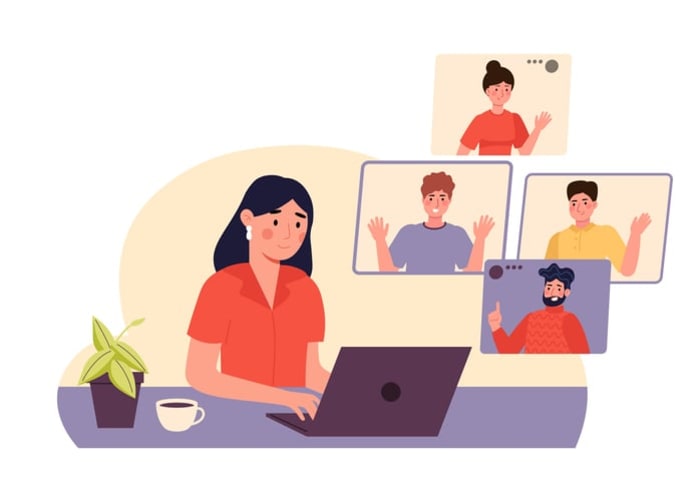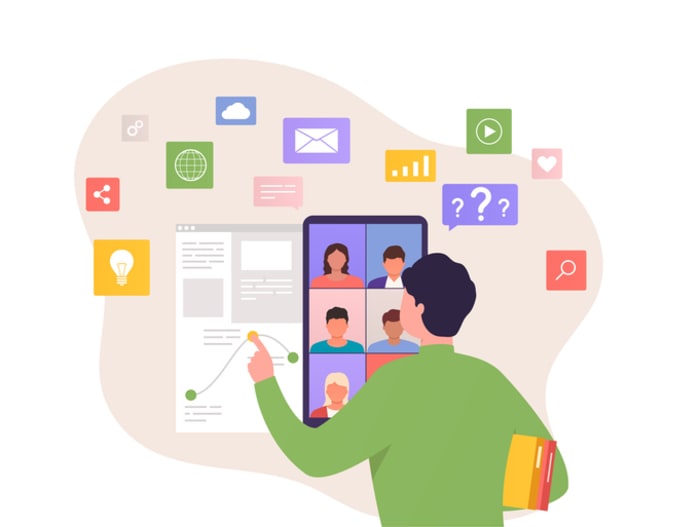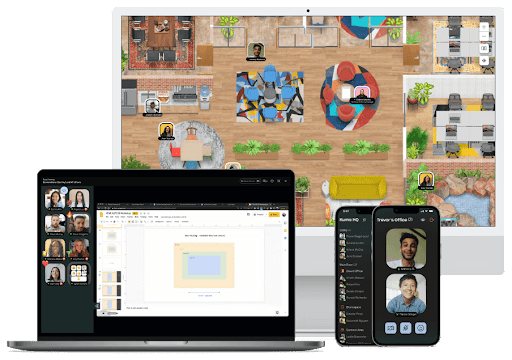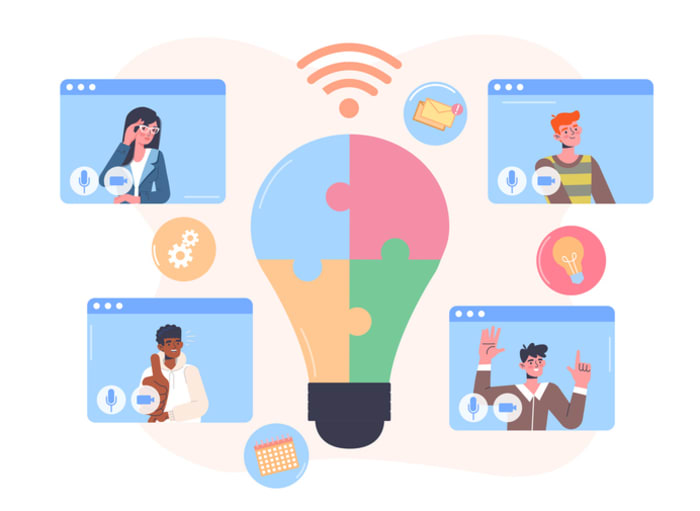Have you ever wondered how some teams effortlessly excel in their tasks while others struggle? The secret lies in effective workplace communication. In today’s fast-paced business world, mastering the art of communication is crucial for building relationships, boosting productivity, and creating a positive work environment. In this blog post, we explore 15 ways to improve effective communication in the workplace, from mastering essential communication skills to fostering an open communication culture. Let’s dive in!
Short Summary
- Effective workplace communication is essential for building strong relationships, increasing productivity and creating a positive work environment.
- Mastering essential communication skills such as active listening and providing constructive feedback can help minimize misunderstandings and conflicts in the workplace.
- Implementing technology, setting agendas & goals for meetings, encouraging participation & active listening are best practices to ensure effective communication in the workplace.
The power of effective workplace communication

Effective workplace communication is an integral element in building strong relationships, maximizing productivity, and creating a positive work environment. Communication in the workplace encompasses various communication channels, including:
- Face-to-face discussions
- Virtual meetings
- Phone calls
- Emails
- Instant messaging
- Team collaboration tools
By utilizing these communication channels effectively, you can improve workplace communication, enhance collaboration, foster understanding, and promote a healthy work culture.
Good communication not only improves employee engagement, but also strengthens team collaboration and reduces misunderstandings and conflicts. In fact, organizations that prioritize effective communication are more likely to have a productive workforce, fewer workplace conflicts, and increased employee engagement.
The impact on employee engagement
Good communication plays a pivotal role in fostering employee engagement. When employees feel that their opinions are valued and that they are involved in two-way communication, they are more likely to be satisfied with their jobs and perform better. Encouraging lateral communication styles, where team members partake in cross-company conversations, and documenting feedback can lead to improved productivity and heightened job satisfaction.
Moreover, demonstrating appreciation for employees’ contributions influences employee engagement positively, resulting in greater job satisfaction and improved performance.
Strengthening team collaboration
Strong communication skills are essential for fostering better collaboration among team members. By understanding team communication styles and preferences, you can create an environment where team members thrive. Incorporating team-building activities, such as team lunches, icebreaker games, and fitness sessions, can facilitate communication, enhance team collaboration, and ultimately improve employee retention.
Familiarizing yourself with your team members and their communication preferences can result in more efficient and successful projects, as well as a positive working atmosphere.
Reducing misunderstandings and conflicts
Clear and open communication is vital in reducing misunderstandings and conflicts within the workplace. By being aware of nonverbal cues such as body language and tone, as well as fostering lateral communication styles that encourage inter-company dialogue, you can minimize the likelihood of misunderstandings and conflicts.
Furthermore, ensuring clarity in workplace communication can be achieved by making the purpose of the message explicit, specifying the format, and stating the goal or purpose. This not only creates a more conducive work atmosphere, but also enhances overall productivity.
Mastering essential communication skills

Essential good communication skills form the foundation of effective workplace communication. Active listening, providing constructive feedback, and comprehending nonverbal cues are critical components of communicating effectively.
By adopting a “listener-first” approach and being attentive to the intent and emotion behind the words being spoken, employees can enhance their communication skills and contribute to a more productive and harmonious work environment.
Active listening
Active listening is a crucial communication skill that involves:
- Attentively listening with all senses
- Responding to the speaker in a manner that enhances mutual comprehension
- Employing techniques such as focusing, exhibiting interest, and furnishing feedback
Employees who demonstrate proficient listening skills are more likely to perform better and contribute to a positive work culture.
By practicing active listening, employees can foster better understanding and collaboration among team members, resulting in a more productive and harmonious work environment.
Constructive feedback
Constructive feedback is a type of feedback that aims to bring about a positive outcome by providing someone with comments, advice, or suggestions. It is precise, tangible, and concentrated on the conduct rather than the individual. Providing constructive feedback assists employees in their growth and improvement by offering them:
- Precise, achievable advice and recommendations
- Feedback that is centered on their conduct rather than their individual
- Enhanced performance
- A more supportive work atmosphere
By following tips such as being specific, actionable, and emphasizing behavior rather than the person, you can ensure that the feedback provided is constructive and beneficial for the employee’s growth.
Nonverbal communication
Nonverbal communication, including body language and tone, has a considerable influence in transmitting messages and emotions. Examples of nonverbal communication include:
- Facial expressions
- Eye contact
- Gestures
- Posture
- Tone of voice
By being cognizant of the nonverbal cues one is sending, being attentive to the nonverbal cues of others, and utilizing nonverbal cues to strengthen verbal messages, employees can enhance their communication skills and contribute to a more productive and harmonious work environment.
Choosing the right communication channels

Selecting the appropriate communication methods and channels guarantees that data is efficiently disseminated and comprehended among team members. Here are some examples of communication channels and their benefits.
- Email and instant messaging: These channels are beneficial for prompt updates and asynchronous communication.
- Phone and video conferencing: These channels enable more personalized and interactive conversations, particularly for remote teams.
- Face-to-face interactions: These interactions are optimal for significant discussions, as they offer the chance to interpret nonverbal cues and foster camaraderie.
In today’s digital age, the rapid shift towards remote work, accelerated by the COVID-19 pandemic, has led to the increased adoption of various communication channels in the workplace.
Email and instant messaging
Email and instant messaging are effective for rapid updates and asynchronous communication, enabling team members to stay informed and connected. The COVID-19 pandemic has resulted in an uptick in the usage of messaging channels such as Slack and WhatsApp, but these tools carry their challeges. To overcome these challenges many remote and hybrid teams turned to communication tools that combine sync and async communication. The tools of often called virtual office or workplace software. Kumospace is the industry leader in this category and teams that use Kumospace report their average meeting time is 9 minutes. Meaning they replace long meeting with quick chats to more effectively communicate.
Phone and video conferencing
Phone and video conferencing play a crucial role in facilitating more personal and interactive conversations, particularly for remote teams. The COVID-19 pandemic has led to an increase in the utilization of video conferencing tools such as Zoom, but just like with email and instant messaging, video calling doesn’t solve all th needs for distributed teams. Many companies have found themselves struggling with too many meetings and emplyees reporting Zoom fatigue.
Its essensial for a business’s succss to have the right tools for stayingconnected and productive. Without that employees and inturn companies can struggle with collaborative work.
Face-to-face interactions
Face-to-face interactions are essential for transmitting tone and body language, particularly for challenging conversations. By engaging in in-person communication, employees can establish a more comprehensive connection and mutual comprehension, thereby providing an opportunity to identify any discrepancies and foster a better understanding of one another’s perspectives.
In the case of urgent information or instructions, major news or sensitive news such as a promotion or transfer, face-to-face communication is the most appropriate channel to ensure clear and accurate delivery of the message.
Replicating Face-to-face interactions virtually

For many companies, especially large multinational ones, face-to-face communication can be impossible. Coupled with the business world increasingly pivoting to a hybrid workplace strategy there is an increasing need a “virtual shoulder tap” where team members regardless of geography can quickly stop by a coworkers desk to ask a question. This what virtual office platforms provide users.
Fostering an open communication culture
An open communication culture encourages feedback, promotes transparency, and supports diversity and inclusivity. By fostering an environment that values open communication, businesses can enhance employee engagement, boost productivity, and cultivate a positive work culture.
In this section, we will explore various strategies to encourage feedback and dialogue, promote transparency and trust, and support diversity and inclusivity in the workplace.
Encouraging feedback and dialogue
Encourage employees to share their thoughts and ideas by:
- Creating an atmosphere where all members feel comfortable voicing their opinions and offering feedback
- Embracing diverse communication styles
- Fostering an environment where everyone feels acknowledged and respected
This can result in a more productive and harmonious workplace.
Additionally, incorporating remote-friendly office activities, such as virtual book clubs or team lunches, can help bridge the gap between in-person and remote workers, ensuring a cohesive and collaborative work environment.
Promoting transparency and trust
Transparent communication is crucial in building trust among team members and preventing misunderstandings. By being candid and transparent about company goals, objectives, and decisions, businesses can foster a strong sense of trust and commitment among employees. This, in turn, leads to enhanced performance, augmented motivation, and improved relationships between employees and managers.
Ultimately, this creates a positive and encouraging atmosphere in the workplace, which can have a positive impact on the overall success of the business.
Supporting diversity and inclusivity
Embracing diverse communication styles and creating an inclusive environment where everyone feels heard and respected is vital for a flourishing workplace. By acknowledging and valuing the unique perspectives and communication styles of each team member, businesses can create a culture of empathy, refine company culture, and expand recruitment possibilities.
This inclusive approach ensures that all individuals feel equally involved and supported in the workplace, leading to more productive employees and reduced turnover.
Implementing technology for enhanced communication

The implementation of technology has revolutionized the way we communicate in the workplace. From video conferencing to instant messaging, technology has made it easier than ever to stay connected and collaborate with team members, regardless of their location.
In this section, we will explore the advantages of utilizing team communication apps, remote work communication tools, and investing in communication training to enhance workplace communication.
Team communication apps
Team communication apps, such as Slack, Microsoft Teams, and Google Chat, have become indispensable tools for modern businesses. By streamlining tasks, breaking down barriers, and preventing lengthy email threads, these apps enhance collaboration and productivity among team members.
Additionally, they provide a platform for both formal and informal communication, fostering a sense of camaraderie and belonging within the team.
Remote work communication
Remote work communication tools, such as video conferencing and project management platforms, have become increasingly important in today’s digital age. These tools allow dispersed teams to stay connected and maintain productivity, even when working remotely.
The COVID-19 pandemic has further highlighted the significance of remote work communication, as many organizations have had to quickly adapt to remote working arrangements.
Investing in communication training

Investing in communication training can help employees develop essential communication skills and improve overall workplace communication. Some benefits of communication training include:
- Developing effective listening skills
- Enhancing verbal and non-verbal communication
- Improving conflict resolution and negotiation skills
- Building stronger relationships with colleagues and clients
- Increasing productivity and efficiency in the workplace
Organizing communication training sessions, either in-person or virtually, ensures that employees have the tools and knowledge to effectively express themselves and understand the messages of their colleagues.
This investment not only enhances individual performance, but also contributes to the overall success of the organization.
Best practices for effective meetings

Effective meetings are a critical part of successful businesses. They foster collaboration, enable the rapid dissemination of information, and provide a platform for team members to discuss big-picture ideas and address concerns.
In this section, we will explore best practices for effective meetings, including setting agendas and goals, encouraging participation and active listening, and evaluating meeting effectiveness.
Setting agendas and goals
Setting clear agendas and goals for meetings is crucial for ensuring they are focused and productive. By establishing specific, achievable objectives and providing a timeline for each topic, businesses can create a solid foundation for effective communication and success.
This approach not only conserves time and resources, but also guarantees that everyone is working towards the same organizational goals.
Encouraging participation and active listening
Encouraging participation and active listening during meetings fosters collaboration and understanding among team members. By creating an atmosphere where everyone feels comfortable voicing their opinions and ideas, employees are more likely to engage and contribute to the overall success of the meeting.
Additionally, promoting active listening helps minimize misunderstandings and disputes, leading to a more harmonious work environment.
Evaluating meeting effectiveness
Evaluating the effectiveness of meetings is essential for identifying areas that require improvement, optimizing meetings, and making them more productive and efficient. By conducting a meeting evaluation, businesses can gain valuable insights into the performance of meetings and identify necessary adjustments and areas that need to be reinforced. This approach ensures that meetings are focused, time is used effectively, and team members remain engaged and committed to the organization’s goals.
Meeting evaluations can help identify areas of improvement, such as the need to improve communication and address poor communication.
Summary
In conclusion, effective communication in the workplace is critical for building relationships, boosting productivity, and creating a positive work environment. By mastering essential communication skills, choosing the right communication channels, fostering an open communication culture, implementing technology, and following best practices for effective meetings, businesses can optimize their workplace communication and achieve greater success. Remember, communication is the foundation of every successful team – make it a priority, and watch your organization thrive!
Frequently Asked Questions
Effective communication in the workplace is based on the seven C’s of communication: being clear, correct, complete, concrete, concise, considered, and courteous.
Utilizing these principles in all written and spoken communications can help ensure they are effective.
Effective communication requires clarity, brevity, attention, assertiveness, and openness. These five elements will ensure meaningful dialogue and understanding between all parties.
Effective communication in the workplace is essential for creating a positive working environment, providing employees with information to perform their roles and tasks efficiently, and enabling teams to collaborate and cooperate effectively.
Good communication also helps build trust and foster better relationships, which ultimately leads to improved business outcomes.
Email, instant messaging, phone and video conferencing, as well as face-to-face interactions, are all effective communication channels to use in the workplace.
These channels can be used to share information, collaborate on projects, and build relationships with colleagues. They can also be used to resolve conflicts, provide feedback, and ensure that everyone is on the same page.
It is important to consider.
To improve your active listening skills, practice paying attention, demonstrating interest, and providing feedback during conversations to show you are actively listening.





